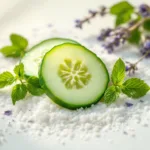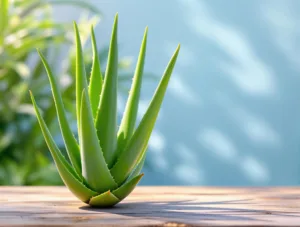The Ultimate Guide to Daily Hair Care with Natural Ingredients: Tips for Healthy, Lustrous Locks
Introduction
Healthy, vibrant hair is often seen as a reflection of overall well-being. However, maintaining it requires more than just occasional shampooing—it demands a consistent, well-rounded routine that nurtures the scalp and strands. With the growing shift toward natural and sustainable beauty practices, many are turning to plant-based ingredients to achieve stronger, shinier, and more manageable hair.
This comprehensive guide explores the science of hair health, common problems, and practical solutions using natural ingredients. Whether you struggle with dryness, breakage, or excessive oiliness, adopting a daily hair care regimen with nature’s bounty can transform your tresses. From homemade treatments to dietary adjustments, we’ll cover everything you need to know for a holistic approach to hair care.
Understanding Hair Structure and Growth
Before diving into care routines, it’s essential to understand how hair grows and what it needs to thrive.
The Anatomy of Hair
Each hair strand consists of three layers:
- Medulla – The innermost layer (not always present in fine hair).
- Cortex – The middle layer containing keratin and melanin, responsible for strength and color.
- Cuticle – The outer protective layer made of overlapping scales that shield the hair from damage.
The Hair Growth Cycle
Hair grows in four phases:
- Anagen (Growth Phase) – Lasts 2–7 years; hair actively grows.
- Catagen (Transition Phase) – A 2-week period where growth slows.
- Telogen (Resting Phase) – Lasts about 3 months; hair sheds naturally.
- Exogen (Shedding Phase) – Old hair falls out, making way for new growth.
Key Takeaway: A healthy scalp and proper nutrition support the hair growth cycle, while damage (heat, chemicals, poor diet) can disrupt it.
Common Hair Problems and Their Natural Solutions
1. Dry and Frizzy Hair
Causes: Over-washing, heat styling, humidity, lack of moisture.Natural Remedies:
- Coconut Oil Mask – Penetrates the hair shaft to lock in moisture.
- Avocado & Honey Mask – Rich in fatty acids and humectants to hydrate.
- Aloe Vera Gel – Soothes the scalp and smooths frizz.
2. Oily Scalp and Greasy Hair
Causes: Overactive sebaceous glands, harsh shampoos, hormonal imbalances.Natural Remedies:
- Apple Cider Vinegar Rinse – Balances pH and reduces excess oil.
- Clay Masks (Bentonite/Rhassoul) – Absorb sebum without stripping natural oils.
- Tea Tree Oil – Antimicrobial properties help regulate oil production.
3. Hair Thinning and Breakage
Causes: Stress, nutrient deficiencies, excessive styling, hormonal changes.Natural Remedies:
- Castor Oil Treatment – High in ricinoleic acid, promotes thickness.
- Egg Mask – Protein-rich to strengthen weak strands.
- Rosemary Oil – Stimulates blood circulation to the scalp.
4. Dandruff and Scalp Irritation
Causes: Fungal overgrowth, dry scalp, product buildup.Natural Remedies:
- Neem Oil – Antifungal and antibacterial properties.
- Yogurt & Lemon Mask – Probiotics and acidity combat flakiness.
- Peppermint Oil – Cooling effect reduces itchiness.
Building a Daily Hair Care Routine with Natural Ingredients
Step 1: Cleansing (1–3 Times Weekly)
- Use a sulfate-free shampoo or natural cleansers like shikakai or reetha (soap nuts).
- DIY Shampoo Recipe: Mix 1 cup liquid Castile soap, 1 tbsp coconut oil, and 10 drops of lavender oil.
Step 2: Conditioning (After Every Wash)
- Apply aloe vera gel or coconut milk as a lightweight conditioner.
- For deep conditioning, use shea butter or argan oil weekly.
Step 3: Scalp Massage (2–3 Times Weekly)
- Stimulate follicles with warm almond or jojoba oil infused with rosemary.
- Massage for 5–10 minutes to boost circulation.
Step 4: Protective Styling & Night Care
- Sleep on a satin pillowcase to prevent friction.
- Braid hair loosely or use a silk scarf to minimize breakage.
Step 5: Nutrition for Hair Health
- Eat protein-rich foods (eggs, lentils, fish).
- Include omega-3s (flaxseeds, walnuts).
- Stay hydrated—water supports scalp health.
Final Thoughts: Embracing a Natural Hair Care Lifestyle
Transitioning to a natural hair care routine requires patience, but the long-term benefits—stronger strands, reduced chemical exposure, and cost-effectiveness—are worth it. By understanding your hair type and addressing its unique needs with nature’s remedies, you can achieve salon-worthy results at home.
Pro Tip: Start with one or two changes (e.g., oiling weekly, switching to a mild shampoo) before fully committing to an all-natural regimen. Consistency is key—your hair will thank you!
Would you like personalized recommendations based on your hair type? Share your concerns in the comments below!









Add comment